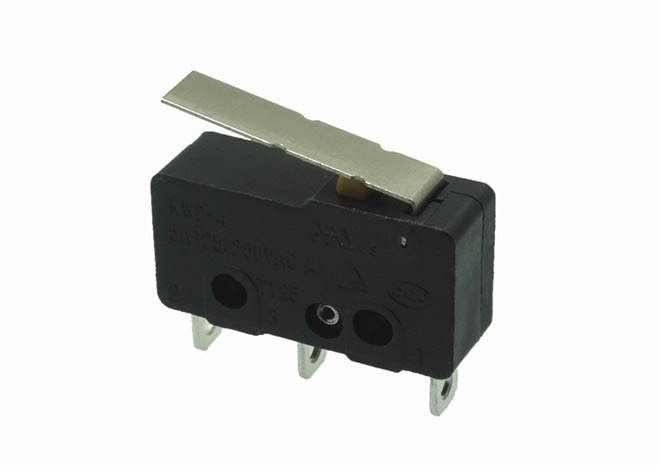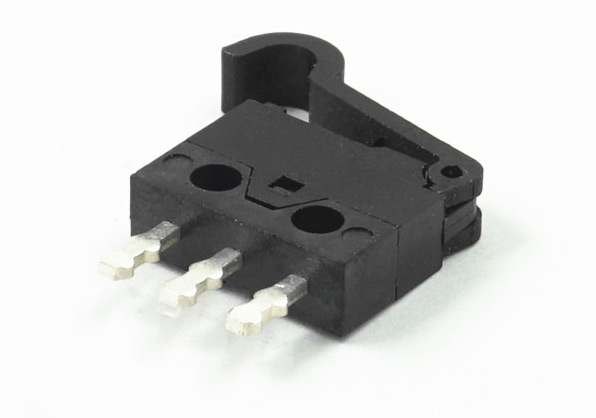
1. Although small in size, it can switch large currents
Normally, when an electronic circuit is closed, sparks called arcs are generated between the contacts. The larger the current is, the easier it is to generate arc light, the slower the speed of switching the contacts, and the longer the duration of the arc light, which is the factor leading to the deterioration of the contacts. The snap action mechanism of the micro switch can switch the contacts instantaneously, so the arc duration is short, and the size is small, but it can be used in circuits with large currents.
2. High precision
The microswitch can basically switch the contacts at the same position even if it is repeatedly opened/closed, so the position detection error is small, and it is suitable for applications requiring high precision. This is also a unique advantage of microswitches with snap-action mechanisms.
3. Durability
Due to the short duration of the arc, the damage to the contacts is relatively small, so the durability has been improved.
4. Touch and sound
The snap-action mechanism has a unique touch and sound when operating, so the operation can be confirmed by touch and hearing.
How microswitches work
The external mechanical force acts on the action reed through transmission elements (pressing pins, buttons, levers, rollers, etc.). Instantaneous action occurs when the action reed is displaced to a critical point. The moving contact and the fixed contact at the end of the action reed are quickly connected or disconnected.
After the force on the transmission element is removed. The action reed produces the opposite action force. When the reverse stroke of the transmission element reaches the critical point of action of the reed. The reverse action is completed instantaneously. The contact distance of the micro switch is short, and the action stroke is short, and the on-off is fast according to the power. The action speed of the moving contact has nothing to do with the action speed of the transmission element.

There are many kinds of micro switches, and there are hundreds of internal structures. According to the volume, there are ordinary, small, and ultra-small; according to the protection performance, there are waterproof, Dust-proof type, explosion-proof type; according to the breaking form, there are single-connection type, double-connection type and multi-connection type. There is also a strong disconnect micro switch (when the reed of the switch does not work, the external force can also make the switch disconnect); according to the breaking capacity, there are ordinary type, DC type, micro-current type, and high-current type. According to the use environment, there are ordinary type, high temperature resistant type (250℃), super high temperature resistant ceramic type (400℃)
Micro switches are generally based on unassisted pressing accessories as the basic type, and small stroke types and large stroke types are derived. Different auxiliary pressing accessories can be added according to the needs. According to the different pressing accessories added, the switches can be divided into various forms such as button type, reed roller type, lever roller type, short boom type, long boom type and so on.
At present, the micro switches on the domestic market have different mechanical lifespans ranging from 3W times to 1000W times according to different use requirements. Generally, there are 10W times, 20W times, 50W times, 100W times, 300W times, 500W times and 800W times, which are generally used in China. Beryllium bronze, tin bronze and stainless steel wire are used as reeds. Foreign ALPS can achieve up to 1000W times. Their reeds are made of rare metal titanium. The WK-01B produced by Tengfei Electronics in China can reach up to 1000W times.


